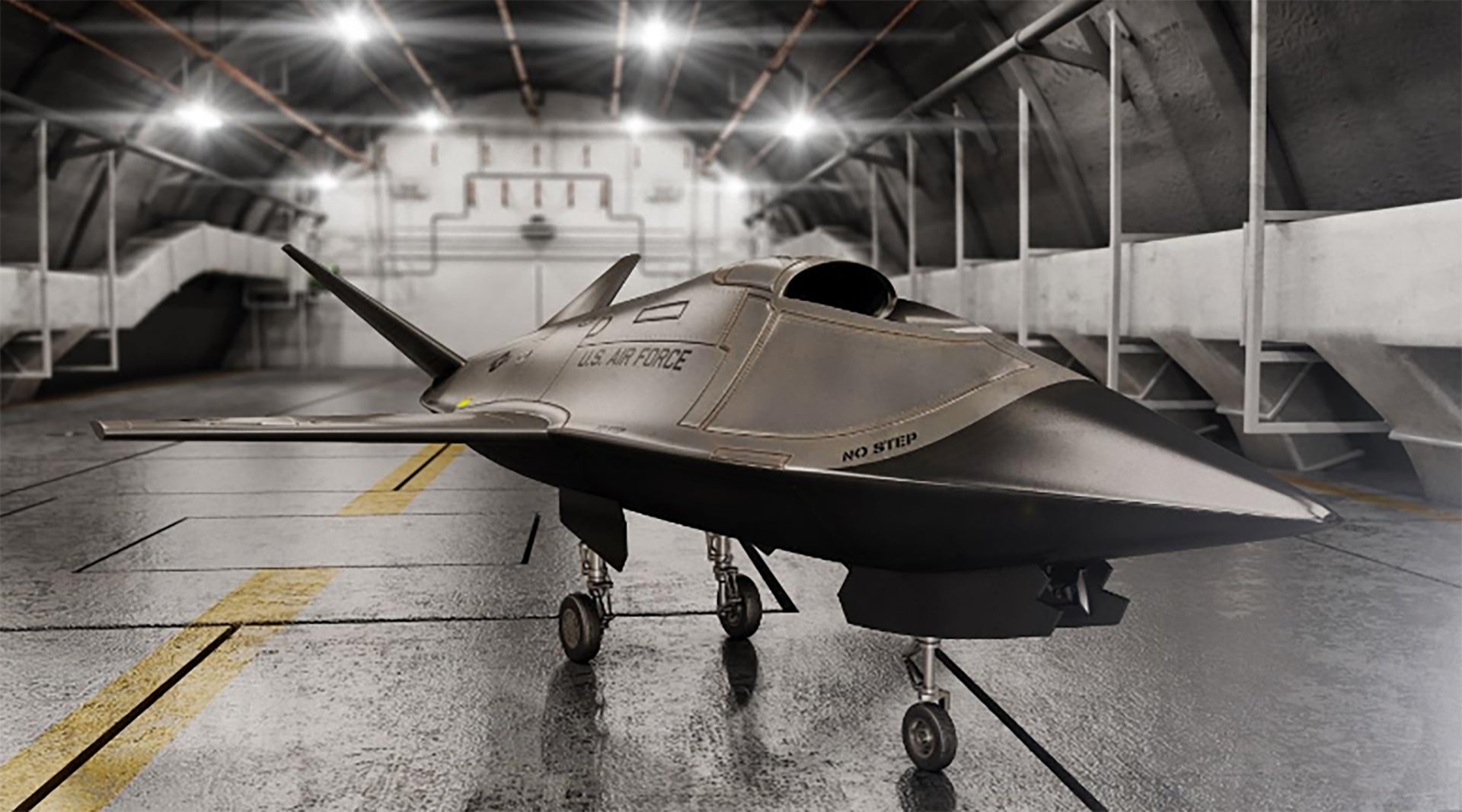We have followed the Air Force Research Lab’s (AFRL) Low Cost Attritable Strike (LCAS) program closely for some time, and now the “bleeding-edge” weapons development arm of the Air Force has released a rendering of what appears to be its vision for concept under the Low Cost Attritable Aicraft Technology (LCAAT) banner, and it looks pretty impressive.
Target drone gurus Kratos, who have bet big on the LCAS concept—bringing a relatively inexpensive, optionally reusable unmanned combat air vehicle to the forefront of air warfare technology—has progressed to developing two distinct types of these unique drones. This includes the UTAP-22, which is based on the BQM-167 target drone, and the XQ-222, which is a larger more complex system with a higher degree of low observability (stealth), payload and range.
Both of these systems just received their official names earlier this month, with the sleek and quick UTAP-22 being dubbed “Mako” and the more advanced XQ-222 getting the “Valkyrie” moniker. The XQ-222 is the aircraft currently set to move forward into testing under the LCAS program, and the Navy has already began testing the UTAP-22 in the “loyal wingman,” manned-unmanned teaming role.

Kratos renderings of the XQ-222 look similar to the Air Force Research Laboratory’s image, although the Kratos design appears to be less sleek, with faceted sides, clipped tips on its wings and tail, and features a more pronounced inlet, similar to that of the EADS Barracuda. This configuration could have changed depending on its final design requirements. Multiple XQ-222s are currently under construction at Kratos’s plant in Sacramento and test flying is slated to begin in late 2018.
On the other hand, the AFRL could be showing us an entirely new LCAAT concept, and the fact that the system has wheels may be a tell that this is the case as the QX-222 is launched via a rocket from a stand and recovered via parachute like its smaller UTAP-22 cousin. Maybe this is a rendering of an ever larger, longer-ranged and overall more stealthy but still relatively affordable unmanned combat air vehicle—a system that would take the concept closer to the capability of an advanced, fighter-sized Unmanned Combat Air Vehicle.
We’ll contact the Air Force Research Lab for more clarification as to what the image depicts, and what stage the craft—or one like it—is in its development. That is if it is indeed something they are pursuing separately from the XQ-222 at all.
Contact the author: Tyler@thedrive.com
